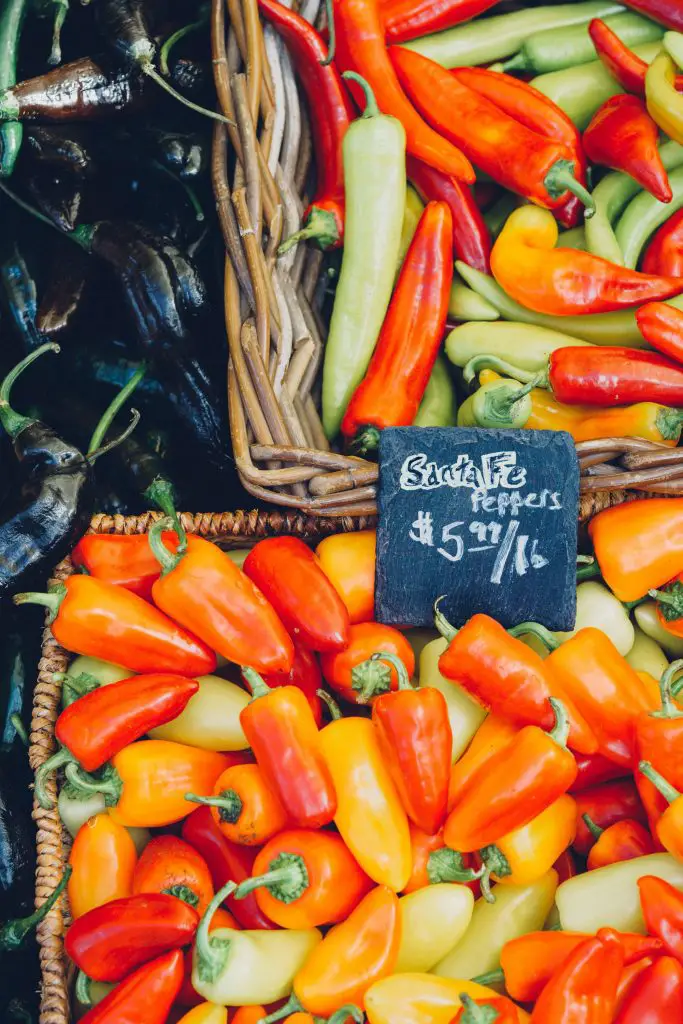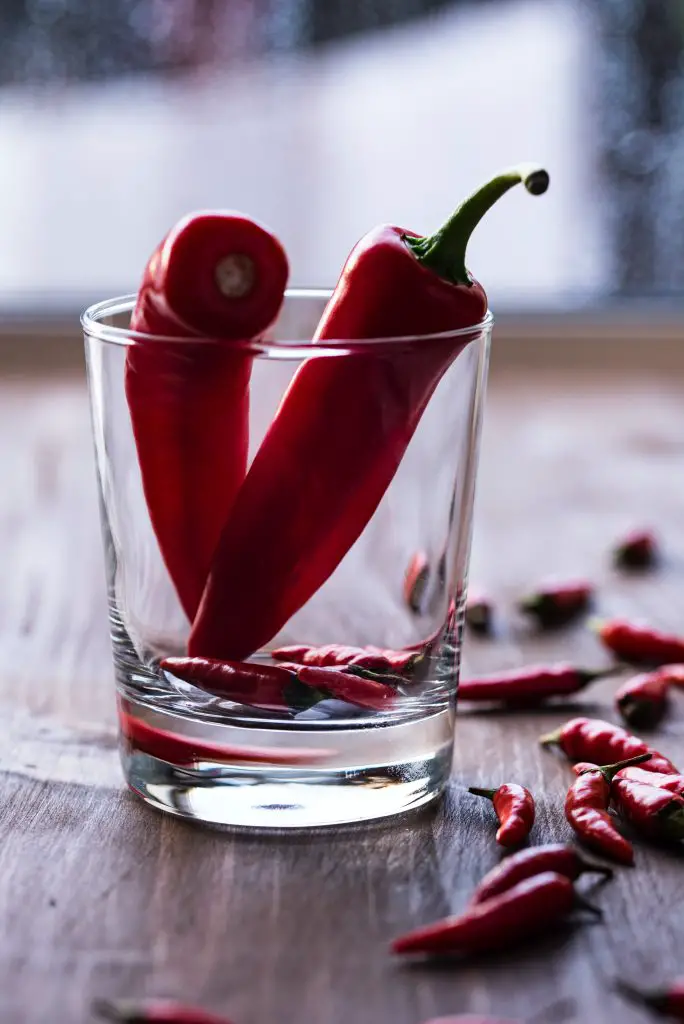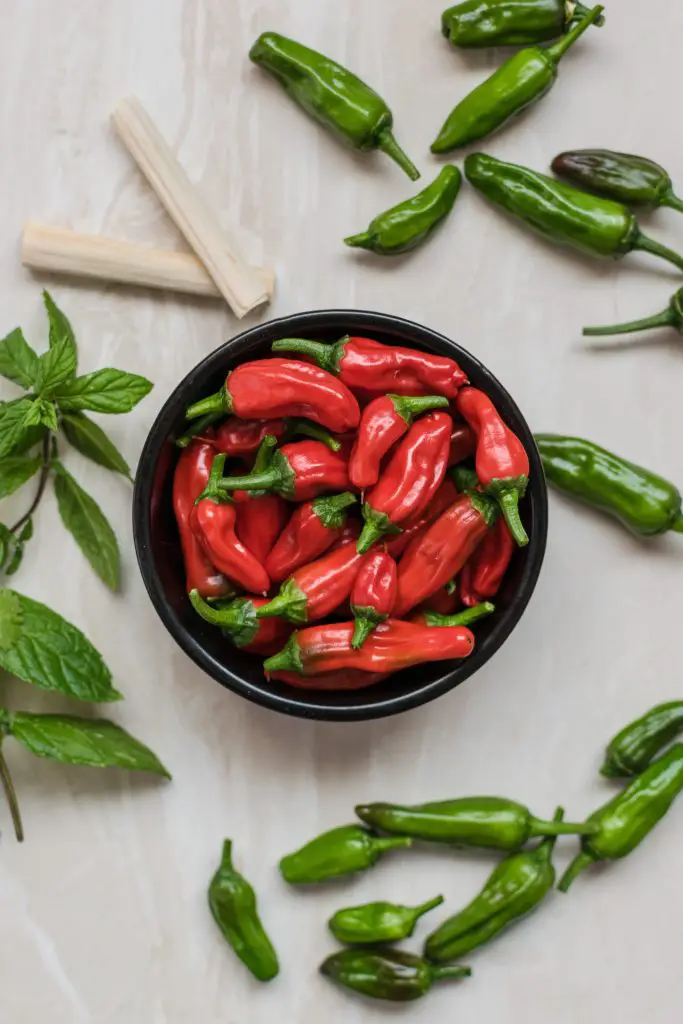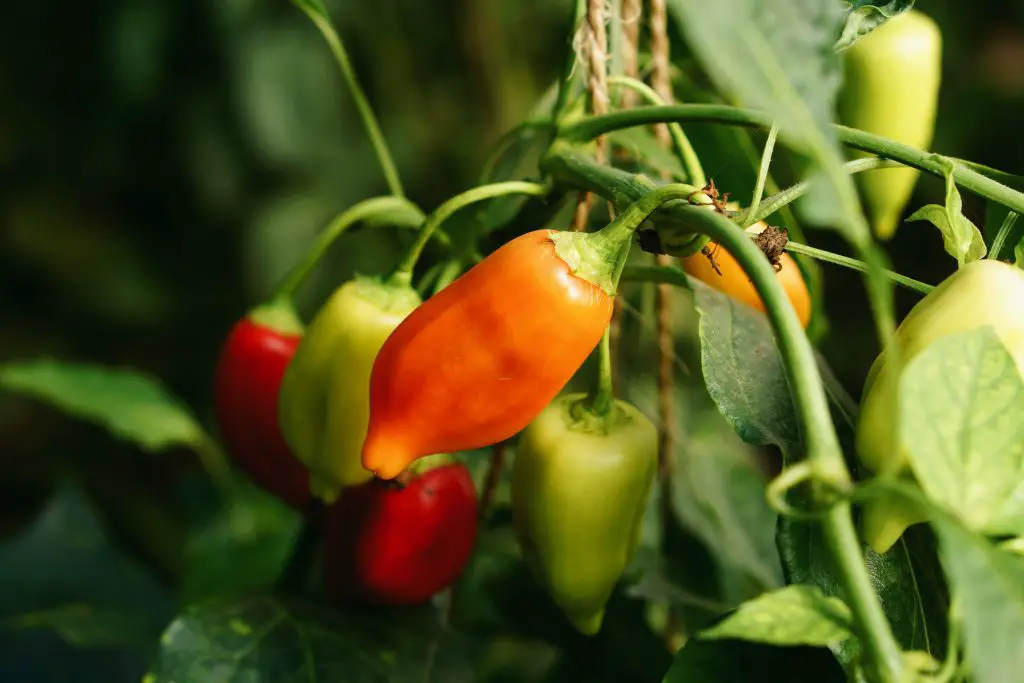What Are The Different Types Of Hot Peppers? There are four major varieties of hot peppers, which are ranked in order of heat, from mild to extremely hot. These varieties are Jalapenos, Serrano, Bird’s Eye Chillies and Habanero.
Jalapeños are the most common hot peppers. They are most commonly Green in colour, but Red varieties are also available. They are used widely in Mexican cuisine and are also used to make Chipotle Peppers. They typically have a Scoville Heat Unit Rating of between 2,500-10,000.
Serrano peppers are hotter than Jalapeños, and are often used as substitutes when more heat is desired. The most common colour is Green, but there are varieties that are Red, Brown, Orange or Yellow. They typically have a Scoville Heat Unit Rating of between 10,000-25,000.
Bird’s Eye Chillies, which are often referred to as Thai Chillies, are typically Red, Green and Orange in colour. They are generally among the smallest Chillies, but are quite spicy. They typically have a Scoville Heat Unit Rating of between 50,000-100,000.
Habanero Peppers often have smaller fruit than either Jalapeños or Serrano Chillies, that is usually Orange or Red. They are extremely hot, around 10 to 100 times hotter than Jalapenos, and generally should be treated with respect. They typically have a Scoville Heat Unit Rating of between 100,000-350,000.

How Is The Heat Of Peppers Rated
The most common method used is the Scoville Scale, invented by Wilbur Scoville, who worked for a pharmaceutical manufacturer, in 1912. The initial test, called the Scoville Organoleptic Test, required the human subjects to taste a Chilli sample, and evaluate how many parts of sugar water it took to neutralize the heat of the Chilli. This dilution factor became known as the Scoville Heat Unit (SHU). The hotter a Chilli pepper is, the higher the SHU, since it needs to be diluted more to reduce or eliminate the heat.
| Heat | Scoville Heat Unit |
| Extemely Hot | Above 80,000 |
| Very Hot | 25,000 to 70,000 |
| Moderately Hot | 3,000 to 25,000 |
| Mildly Hot | 700 to 3,000 |
| Non Pungent | 0 to 700 |
The limitation of this test was, it was dependent upon the sensitivity of the tester to the Capsaicin, the chemical compound that gives Chillies their heat. In addition, the number of tests that could be carried out by a single tester, was limited on how many samples a taster can handle, within a reasonable time.
As more advanced analytical testing techniques become available, namely High Pressure Liquid Chromatography (HPLC), scientists were able to correlate the concentration of Capsaicin to the SHU of a pepper, to create a less subjective and humane test method. It was found that 16 parts per million of Capsaicin (mg per kg), equals 1 SHU.

It was later found, that while Capsaicin is the major source of heat in pepper, there were also several other compounds that contribute. The table below shows the SHU rating of the pure compound.
| Scoville Heat Units | Chemical |
| 16,000,000,000 | Resiniferatoxin |
| 5,300,000,000 | Tinyatoxin |
| 16,000,000 | Capsaicin |
| 15,000,000 | Dihydrocapsaicin |
| 9,200,000 | Nonivamide |
| 9,100,000 | Nordihydrocapsaicin |
| 8,600,000 | Homocapsaicin, Homodihydrocapsaicin |
| 160,000 | Shogaol |
| 100,000 to 200,000 | Piperine |
| 60,000 | Gingerol |
| 16,000 | Capsiate |
What Is The Hottest Pepper On Earth?
The Carolina Reaper is currently ranked as the hottest pepper. The SHU units was found to be around 1.6 million units, on average. However, the peak values recorded was around 2.2 Million SHU. To put that value in perspective, the common Jalapeno typically records SHU readings of between 2,500 and 4,000, which means that the Carolina Reaper is approximately 500 times hotter than a Jalapeno.

How To Grow Chilli Peppers
The Chilli Peppers, also known as Hot Peppers, are a member of the Solanacae family, which also contains Tomatoes, and originated in South America. It is a perennial plant in its natural frost-free environment, however, many gardeners treat them as an annual, as a frost will often kill the plant. Like Tomatoes, the plant was introduced into Europe after the discovery of the Americas. This introduction into many new regions, led to an explosion in the number of varieties available. They are now available in a range of shapes and colours (Green, Yellow, Purple and Red).
One of the lowest cost online retailers of Pepper seeds in the US is Seeds Now. They have over 40 different varieties of Pepper to chose from. In the UK I would recommend Thompson & Morgan as they have an enormous range of seeds.
Chilli Peppers are a frost tender plant, that requires warm conditions to thrive. They are generally grown in conditions similar to Tomatoes, but require a little more heat. Plants can be established by direct sowing into soil or modular trays, though sowing in trays under cover in Spring or early Summer is preferred. This is because they require at least 15°C (59°F) to germinate, and it is often beneficial to supply additional heat. A heat matt or heated propagator, is often used for this purpose and is almost essential when planting in cooler climates, in the early part of Spring.
Seedlings established in a greenhouse should not be planted out until the temperature is at least 16-20°C (61-68°F), however, temperatures approaching 30°C (86°F) are preferred. When planting out seedlings, they prefer a moist rich soil with plenty of organic matter with a pH of 6.5-7.0, at spacing of 50cm (20 inches) apart. To learn more about testing the pH of soil, go to https://planyourpatch.com/why-is-ph-important-in-soil/.
The staking of the plants is recommended to provide additional support, though the degree of support required is far less than Tomatoes. Regular watering is required to ensure that the plant remains moist throughout the growing season.

When To Harvest Chillies
Most Chilli varieties undergo some sort of colour change, that typically occurs as the fruit ripens and that starts around the top of the fruit. Once the colour change is complete, it is best to wait a week or so before picking the fruit, to ensure they are fully ripe. Regular picking of the fruit is recommended, as it will encourage the formation of additional fruits.
How To Overwinter Chillies
Hot Peppers are actually perennial plants in frost-free environments, and can be overwintered allowing an earlier harvest the following season. To optimise the chances of survival, select only the strongest plants and harvest all the fruit. Once the leaves begin to drop, prune your plants leaving about 10-15cm (4-6inches) of the main stem. If your Chilli has been grown in the ground, dig it up and plant into a pot.
When bringing the plant indoors, it is generally not sufficient to place it in a greenhouse, unless you have some sort of heating device to stop the plant from freezing. An alternative to heating the whole greenhouse, is to use a heated propagator. One example of this, is the heating propagator range from Vitopod, which can be adjusted for height. It also allows the temperature to be controlled easily and more accurately. https://www.greenhousesensation.co.uk/vitopod-heated-propagator-bundles.html/.
Once inside, the plants should be stored a temperatures between 5°C-12°C (41-54°F). At these temperatures, far less water us required. To avoid damp conditions and deter mould build up, check plants once a week and water only when the compost is getting dry. Allowing plenty of airflow around your plants, as this will also help to avoid bacterial and viral disease build up.
Related Articles
What Are The Different Types Of Hot Peppers?
Why Are My Pepper Plants Not Growing Peppers?
How Many Jalapenos Do The Best Pepper Varieties Produce?
Pepper vs Black Peppercorn: What Is The Difference?
Capsicum vs Bell Pepper: Are They The Same Thing?
Are Dried Peppers Hotter Than Fresh Ones?
